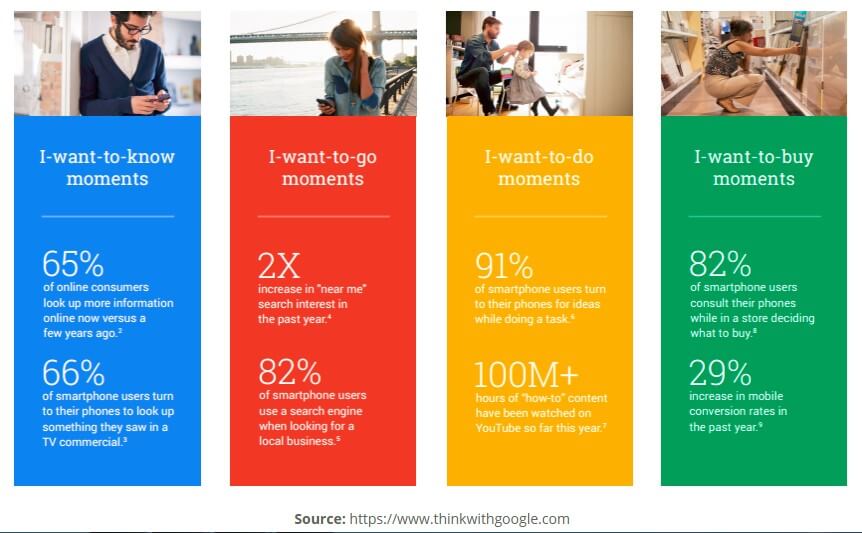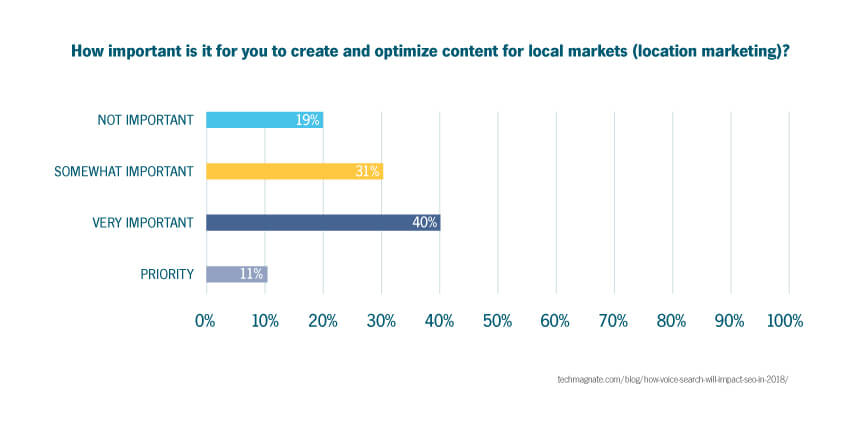Things change lightning-quick in the digital world, so if you’re thinking of duplicating your content marketing strategy for 2018, think again. Last year, we wrote about our top digital marketing predictions for content, including intelligent/predictive content, digital asset management, data-driven content marketing, influencers and execution. Those trends continue to shape the work we do every day and will become even more important over time.
Over the last 12 months, the content strategy team at DAC has continued to evolve and incorporate new technologies in order to make sure our clients are winning at every digital touchpoint across the customer lifecycle.
As the New Year approaches, we’re taking a look into our crystal ball to see what the future holds for content marketers in 2018:
The continued rise of voice search will affect how we create content
At the Google I/O keynote address in May 2017, CEO Sundar Pichai revealed that 20% of queries on Google’s mobile app and Android devices are voice searches. With the increased adoption of voice-activated smart devices like Google Home and Amazon Echo, voice search is expected to account for 50% of all searches by 2020, according to comScore. From basic questions like “Who is the Canadian Prime Minister?” to ordering products directly to your door from Amazon, people are shifting their search and consumption habits.
The underlying difference between voice search and text search is the accuracy of the results that get served up to the user. Voice search is more conversational, which helps to solve the problem of understanding user intent that text keywords sometimes present. In theory, the user should get the most relevant result in response to a voice query. So how can brands make sure that their content is being served as the most relevant response to voice queries made by their audience?
In 2018, brands will revamp their content for voice search by incorporating long-tail keywords, adding FAQ pages, optimizing for natural language, improving website speed and making sure they have content to support every micro-moment of their customers’ search queries.

Winning brands will have local content strategies
In 2017, we continued to see the exponential growth of hyper-local “near me” searches or comparable searches without “near me”. In fact, nearly one-third of all mobile searches are related to a location. While optimizing your website for local success and managing citations across the web are necessary tactics to capture volume and leads from Google’s SERP, creating local content is still an underutilized strategy that can lead to improvements in discoverability, reach and engagement metrics, as well as offline sales.

In 2018, local will be an integral part of content marketing strategies, as differences in people’s wants and needs are reflected in their unique search habits and where they reside. Cookie-cutter content won’t perform the same way across all markets, whereas local content will communicate to your audience that your business is involved in the community they’re searching for, and show Google that you’re a relevant local company with your finger on the pulse of local events.
Brands can create geo-specific content by doing research to understand who their audience is and developing content that appeals to those users. Tools like MyBestSegments from Claritas allow you to get lifestyle segmentation information for any ZIP code in the United States. Local influencers can also help to develop geo-specific content that can be used on brand websites or shared through other channels.
Content creation will be all about quality — and promotion
With an increased emphasis placed on the importance of producing content over the last several years, it’s no wonder that the market for certain types of content (e.g. blogs) has begun to saturate. Informational searches on even the most obscure topics will yield too many results to count, making it difficult for brands to cut through the clutter.
According to a recent survey conducted by Orbit Media, bloggers in 2017 are spending more time writing posts and publishing less frequently. Looking forward to 2018, winning brands will follow suit by writing longer, better, more personalized content and promoting it through paid means, leaving short-form content and link-sharing to their social channels.

It’s no longer enough to simply identify gaps in your brand’s keyword rankings and fill them. Content marketing strategies need to incorporate as much audience data as possible, and creation needs to be highly relevant and targeted to your personas. Furthermore, organic means of driving traffic to your content — even great quality content — will no longer have the same importance as content promotion. Already there is almost a 5x increase in paid content promotion among bloggers over the last four years, and 1 in 4 bloggers are collaborating with influencers.
Even though emerging technologies are giving us access to tools and resources that we never had before, there is still no substitute for high-quality, data-informed content. Much will change in 2018, but that much is sure to stay the same.
Tzvi Grosman is a Digital Strategist and Content Writer in DAC’s busy Content team. To learn more about what it takes to translate great content to business results, please get in touch!




